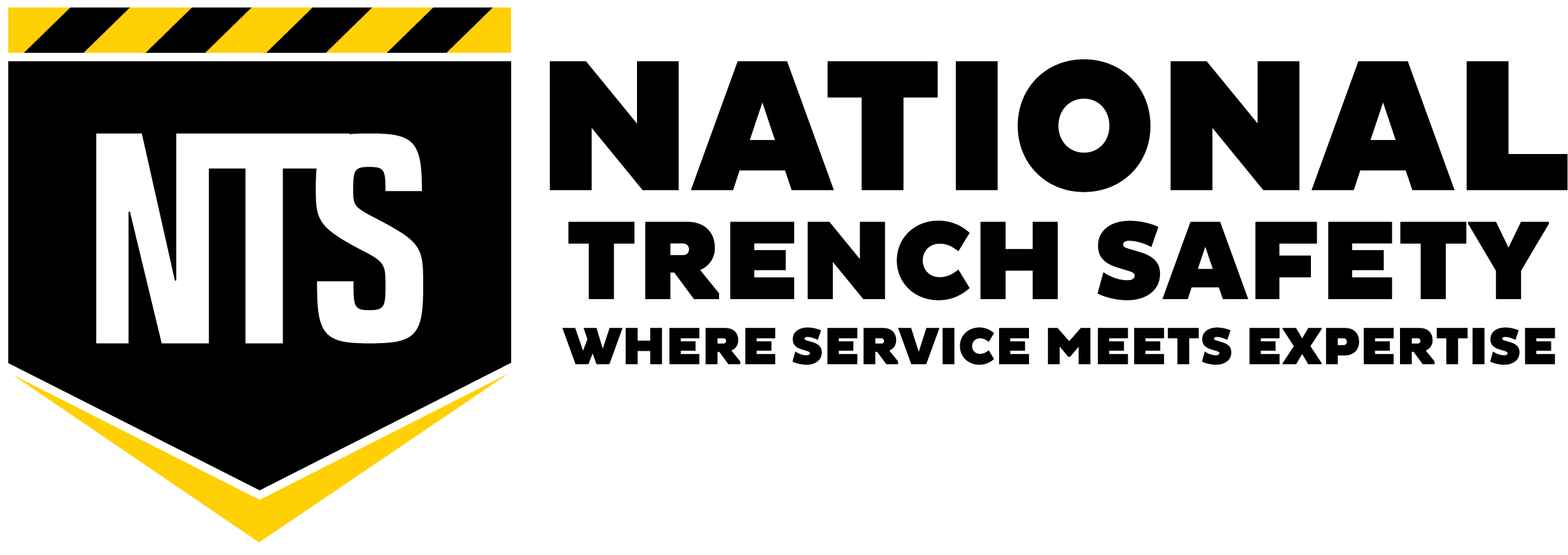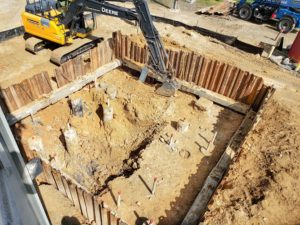Polyester manufacturers provide vital solutions to various industries and markets dependent on polymer and polyester resources used in the production of finished goods. The polyester manufacturing process consists of a series of stages starting with compounding, which involves mixing raw materials under pressure and heat. Manufacturers have to incorporate storage management solutions to guarantee that the production process runs efficiently.
Recently, a North American integrated polyester producer invested in constructing a new silo that could adequately store rubber pellets used in polymers’ production. To properly secure the silo structure, a foundation composed of multiple pylons was design requiring an excavation pit measuring 28-ft in length, 21-ft in width, and 6.5-ft in-depth. The excavation pit would need a shoring device that could support the excavation walls and address a few concerns with an existing water line located a few inches away on the east side. A terra-cotta pipe running south would also be in proximity. Additionally, the system would have to provide an open-span area so that workers could complete the pylon cement pour foundation and perform the silo attachment.
After a few calculations, the contractor chose to use a site-specific excavation brace (System-30) in conjunction with steel sheets. The excavation brace was composed of four arms, a configuration of extension pieces added to hydraulic and mechanical ram units pinned together at the knuckle. Arms are secured, conforming to a four-sided mechanism known as the ring. The steel sheets are driven down around the excavation brace and secured with restraining chains at a planned depth. Force is then applied by expanding the hydraulic brace against the interlocking sheets creating positive pressure against the excavation walls.
The new setup allows the manufacturer to move away from its presiding cumbersome storage operational approach that involved using heavy-duty trailers as temporary storage units under a complex operational scheduling process. The addition of the silo will increase inventory efficiency and minimize operational costs.







